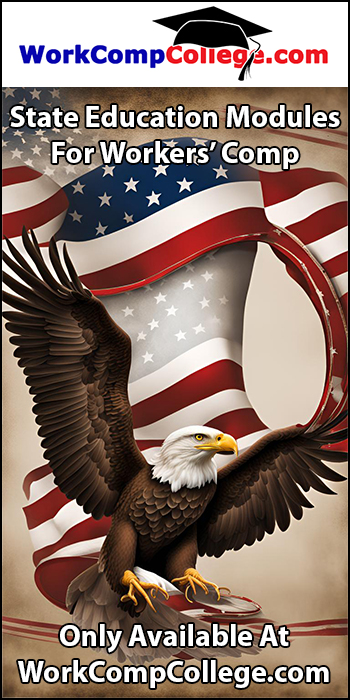
I am grateful to have Scott Mann as a long-time coach and mentor. On October 29th, we participated in a meaningful WorkCompCollege webinar titled “Getting Under the Waterline: Creating a Connection to Improve Injured Worker Recovery.” This webinar highlighted the importance of connecting with each other and the injured workers that we serve in the workers’ compensation industry. Scott’s expertise and passion illuminated the critical topic of fostering meaningful connections. Discussing such a vital aspect of our industry was a privilege.
I’ve been eager to share Scott’s insights with the Workers’ Compensation industry. My relationship with Scott began around 2019 when we started working together through Rooftop Leadership. During the COVID-19 pandemic, we worked together to ensure that ReEmployAbility was doing everything possible to keep the business engaged through a worldwide pandemic. ReEmployAbility used Scott Mann’s book “Leading Through Chaos” as our playbook during that challenging time. This resource also served as a framework for connecting with each other as we navigated the new world of virtual work serving to enhance our interactions with injured workers and our employees. Meeting people where they are emotionally is the key to creating opportunities for open communication that leads to empathy.
A Strategy of Connection
As a retired Green Beret, Scott Mann has developed leadership and communication skills built on his experiences in the military, which were guideposts for professional development. The principles of the Green Beret approach emphasize relationship-building and social capital as essential components for strategic outcomes. This methodology highlights the significance of creating connections, particularly in environments characterized by low trust and chaos.
Injured workers often experience a sense of disconnection following an injury, primarily due to the complexity of the workers’ compensation system and a lack of communication by their employers. Acknowledging that individuals share common values such as family, faith, and connection is crucial and a starting point to purposeful communication. Mutual understanding is the foundation for building these connections. In our increasingly disconnected society, we must contemplate the nature of these connections. Disengagement often arises in situations overshadowed by distraction, distrust, and emotional turmoil. Professionals in the workers’ compensation field are in an industry of empathy and human connection, and by prioritizing human connections, adjusters and all stakeholders in our industry can better support injured workers in their care.
Understanding Injured Workers’ Pains and Goals
When dealing with injured workers, it is common for injured individuals to approach these discussions from a place of fear or anger. Our challenge is to navigate through this distrust and disengagement effectively. Leadership is about managing energy; it involves regulating our emotional responses and being aware of our own states of mind. For adjusters, it is vital to approach meetings and conversations with a mindset of empathy and active listening.
Workers’ Compensation professionals must ask themselves how they can support injured workers by considering their objectives and challenges. Relating to an injured worker’s pain and relating to their goals is essential. Regardless of the setting, individuals often feel a sense of reciprocity when they recognize they are being supported. It’s vital to assess whether the other party is ready to engage in meaningful dialogue.
Engaging beyond Distrust and Disengagement
Open-ended questions can help us identify what is significant to them. By fostering this understanding, we can gain trust and ensure that injured workers receive the support they need throughout their recovery process. It is essential to explore an injured employee’s needs and current state regarding their injury for a holistic understanding of what they are going through.
Scott suggests that we reflect on the following questions before beginning a session with injured workers:
- Who am I?
- Why am I here?
- What do they need from me?
- What do I have to offer?
Getting Under the Waterline as a Key for Workers’ Compensation Professionals
Professionals can establish a productive partnership by meeting injured workers where they are. Fostering feelings of being heard and understood can lead to trust and mutual engagement. The Workers’ Compensation field should prioritize building a genuine human connection over transactional interactions, which is crucial for effective communication, especially when we are working with people going through difficulties, such as workplace injuries. Professionals in the workers’ compensation industry must establish connections with injured workers to provide them with the best possible support.
For anyone who missed it or wants to revisit Scott’s valuable insights, I’m pleased to share the replay of his webinar! This session is essential for everyone in the workers’ compensation community, particularly those registered with WorkCompCollege.com. Don’t miss this opportunity to enhance your knowledge and skills!
To delve deeper into this discussion, check out Scott Mann’s new book “Nobody is Coming to Save You: A Green Beret’s Guide to Getting Big Sh*t Done.” You can find copies online here: https://scottmann.com.




As work comp professionals, I agree that we should engage with the injured worker with empathy. Yes, we must know our purpose in this work comp world in order to serve those in need.